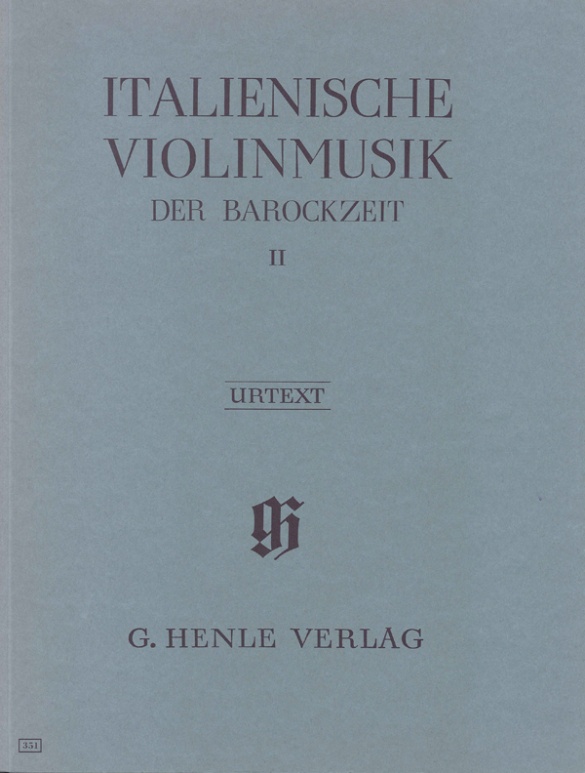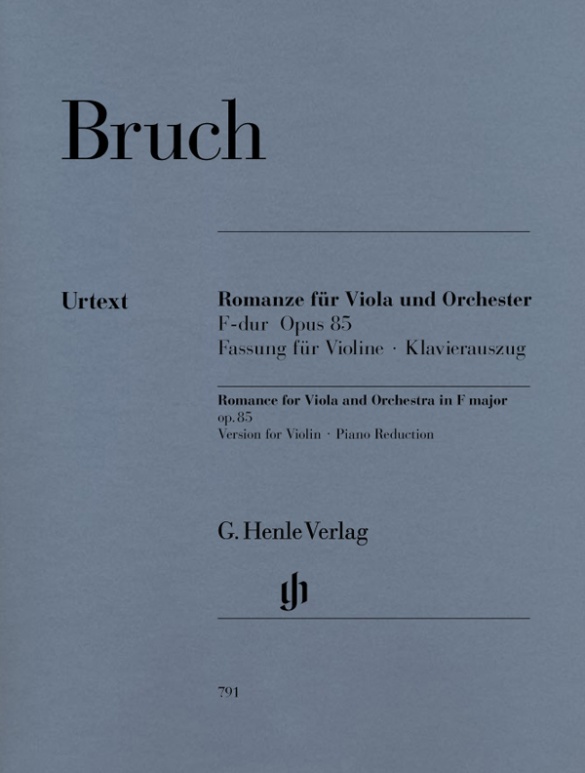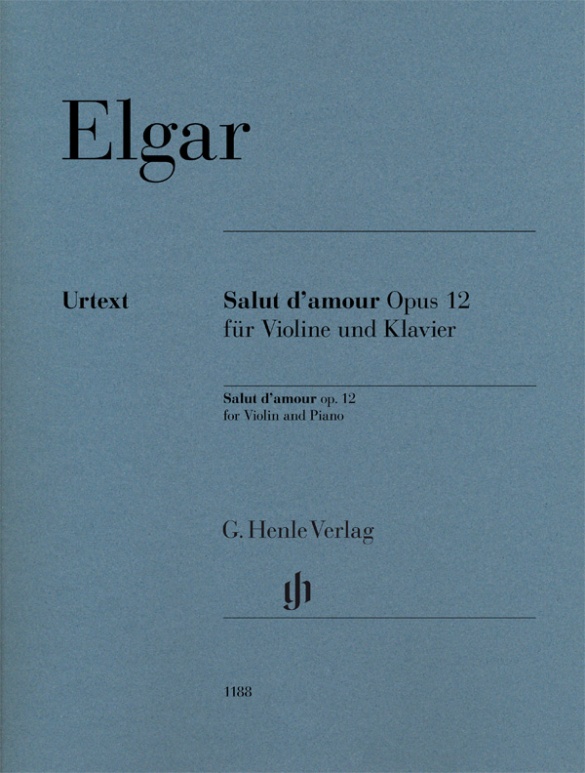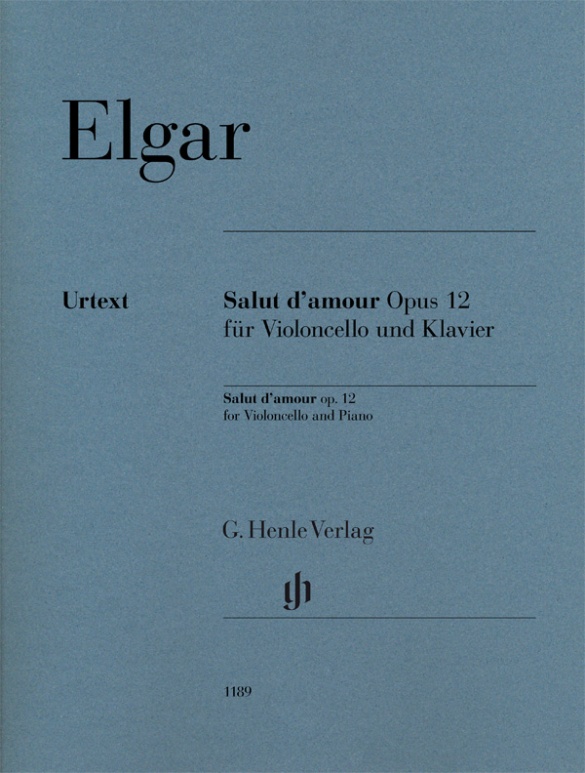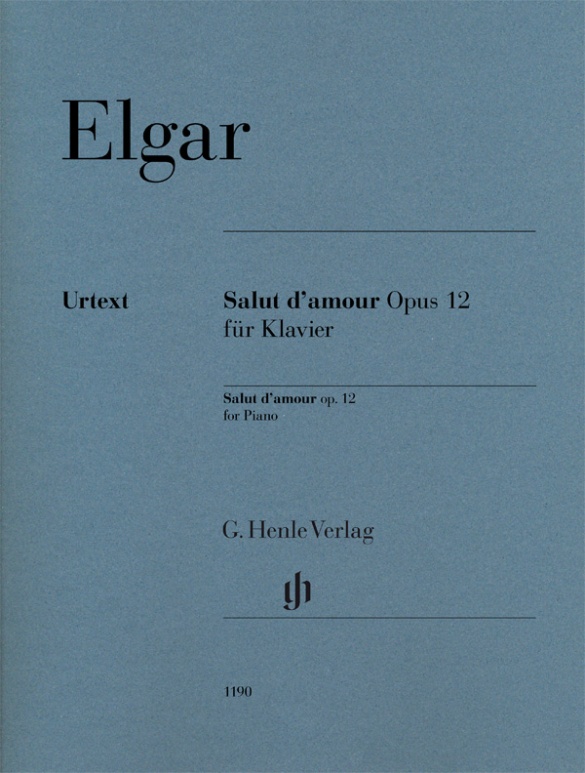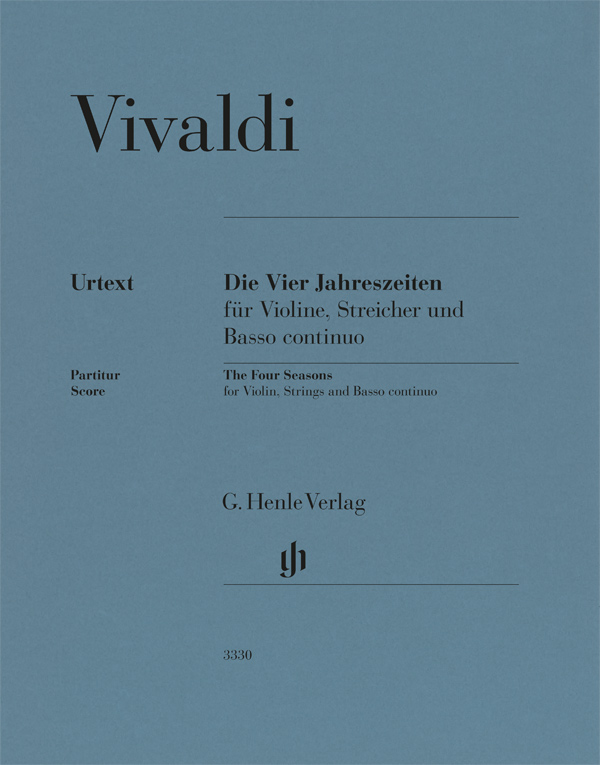

Antonio Vivaldi
The Four Seasons
The Four Seasons are without question among the most famous compositions in Vivaldi’s oeuvre – perhaps even in all Baroque music. They comprise four concertos for violin, strings and bass continuo to which Vivaldi himself gave the programmatic titles “Spring”, “Summer”, “Autumn” and “Winter”. Each is preceded by a poem that presents the mood and scene of the season, which Vivaldi then depicts brilliantly in music – from thunder and lightning to birdsong and even a barking dog …
This Henle Urtext edition offers all four concertos in a single volume, and reflects the latest research. The preface has been written by Federico Maria Sardelli, one of the world’s most renowned Vivaldi experts. The edition draws on the first edition organised by Vivaldi himself and also on several contemporary manuscript copies, with important variants clearly presented.
The practical and perfectly prepared orchestral parts also include a continuo part realised by early music specialist Wolfgang Kostujak and thus leave nothing to be desired. In addition to the performance material, a study score (HN 7020) and a piano reduction (HN 1020) are also available.
Content/Details
About the Composer
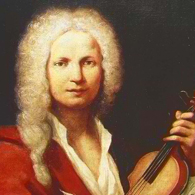
Antonio Vivaldi
He earned his fame as a violin virtuoso and composer primarily from (over 500) instrumental concerti, whose Baroque model (three movements, ritornello form) he created. He also wrote numerous operas.
| 1678 | Born in Venice on March 4, the son of a barber and violinist. Musical instruction probably from his father. |
| 1703 | Ordination and appointment as violin teacher at the Ospedale della Pietà; around 1716 Maestro de’ Concerti. Writes violin music and sacred works. |
| 1711 | Publication of Vivaldi’s Op. 3, “L’Estro Armonico,” the most influential concerti of the first half of the eighteenth century. |
| 1713 | Successful premiere in Vicenza of his first opera “Ottone in villa.” He then becomes active as composer and impresario at the Venetian Teatro Sant’Angelo, where he performs his own and others’ compositions. |
| around 1716 | Publication of the concerto collection “La stravaganza,” Op. 4. |
| 1718–20 | As Maestro di Capella a Camera at the court of the governor of Mantua, Prince Philip of Hesse-Darmstadt, he is responsible for secular music. |
| from 1720 | Numerous travels to Rome and Vienna, perhaps even to Prague. |
| 1724 | Performance in Rome of his opera “Giustino.” |
| 1725 | Publication of the concerto collection “Il Cimento dell’Armonica e dell’Inventione,” Op. 8, which opens with the “Four Seasons.” |
| 1727 | Premiere in Venice of the opera “Orlando (furioso)”; publication of the concerto collection “La Cetra,” Op. 9. |
| 1732–36 | Opera performances in Verona and Venice. |
| around 1740 | He decamps for Vienna. |
| 1741 | Dies in poverty in Vienna on July 28 |
About the Authors
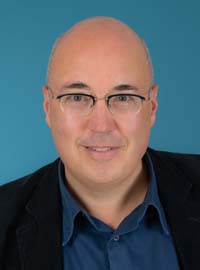
Dominik Rahmer (Editor)
Dr. Dominik Rahmer, born in 1971 in Mainz, studied musicology, philosophy and maths in Bonn. He did his Magister Artium in 1999 and his doctorate in 2006 with a thesis on the music criticism of Paul Dukas.
From 2001 to 2011 he was employed at Boosey & Hawkes/Bote & Bock in Berlin, where he also worked on the Critical Edition of the Works of Jacques Offenbach (OEK). Since 2011 he has been an editor at G. Henle Publishers in Munich, with a particular focus on French and Russian music and works for wind instruments.
Product Safety Informations (GPSR)

G. Henle Verlag
Here you can find the information about the manufacturer of the product.G. Henle Verlag e.K.
Forstenrieder Allee 122
81476 München
Germany
info@henle.de
www.henle.com
recommendations
autogenerated_cross_selling
Further editions of this title
Further editions of this title


